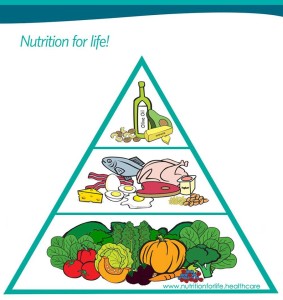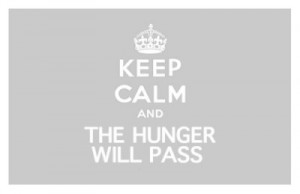- Eat smarter – Minimise your Fructose and Polyunsaturated Oil consumption.
- Buy smarter – Become ‘Sugar Aware’ and eliminate Seed oils.
BASICS FRUCTOSE
- Fructose is a chemical appetite stimulant.
- Look at labels to find the sugar content.
- Sweet foods are treats only.
- EAT ONLY WHEN YOU ARE HUNGRY.
- Have the majority of your calories at the beginning of each day.
- Two phases when cutting down on Fructose.
- The first phase is the use of alternative sweeteners as supplements in the diet.
- The second phase which comes over a period of time when you don’t need the sweetness.
BASICS POLYUNSATURATED OILS
- Minimise Polyunsaturated Fats and Oils.
- STOP the Margarine, Canola, Vegetable and Seed Oils.
- Best to have Butter and Lard and the fruit oils such as Olive or Coconut Oil.
- Don’t burn the oils as that may increase the Trans Fats.
- You still need to watch the calories!
BASICS REFINED CARBOHYDRATES
- Reduce/eliminate refined carbohydrates
- Move away from the breads, pizza, rice,
- Decrease the intake of starchy vegetables like potato, sweet potato
- Substitute vegetables and in particular green leafy vegetables
CONCEPTS
NoFructose
NoFructose is NOT a diet.
It is a concept that in conjunction with minimising the ingestion of Polyunsaturated Oils should have dramatic short and long term health benefits.
No-one likes to be conned let alone work out that they are addicted to a substance which has been pushed upon us by our convenience lifestyle.
The first step is to recognise that fructose is a chemical appetite stimulant that works for a prolonged time with its own unique long term toxic metabolic pathway. The trick is to stop to see sweet foods as treats rather than part of our staple diet.
The next strep is to minimise the Polyunsaturated Oils in our diet. You can avoid them in the home but difficult when you are out or buying processed food.
There is no cost in cutting back on Fructose, Refined Carbohydrate and Polyunsaturated Oils.
Give it a go for 2 months. You will not go back from there.
What Food
The food that we should be taking in is that which our great grandmothers would recognise.
Food is Fuel
If you knowingly put the wrong petrol in your car engine even though “super” sounds better than “unleaded” it will not run properly. It has short and long term complications in efficiency.
Now we know that Fructose and Polyunsaturated Oils are the wrong fuels for our system in the amounts and frequency that we take in.
It is time to get the right ‘REAL FOOD’ back in.
________________________________
If you require individual advice then the team at Nutrition for Life do exactly that.
www.nutritionforlife.healthcare
 __________________________________
__________________________________
Changing our food industry
It is not about jobs. It is a choice about lifestyle and health.
Jobs will develop to suit the market economy.
Carbohydrate ~ 60%
- Sugars
- Glucose
- Galactose
- Fructose – relatively rare in nature. Common in 2012
- Cellulose
Protein ~ 15%
- Meat & Nuts
Fat ~ 25% – learn more at Fat and Oil
- Saturated Fats
- Monounsaturated Fats
- Polyunsaturated – Seed Oils
Just like sunlight we need a certain amount of Fructose but too much has short and long term Health Issues.
We don’t need much Polyunsaturated Oil at all.
The consumption of Sugar and Polyunsaturated Seed Oils combine in our diet to create inflammation in every blood vessel wall and in every tissue in every organ of the body. The inflammatory process makes everything susceptible to damage and disease.
MORE INFORMATION
Fructose is fruit sugar and is one half of the ‘toxic’ material we call sugar.
Sugar is sucrose which is 50% Glucose (an appetite suppressant) and 50% Fructose (a potent appetite stimulant).
Our dietary recommendations over the last 40-50 years have been based on well meaning scientific literature but as it turns out have probably made the wrong conclusions in that passage of time. Low cost food production has complicated the issue with the addition of Polyunsaturated Oils.The net effect is confusion for anyone interested in doing the right thing with their and their family’s diet.
One of my regular requests is for specific food advice and what to do next. The NoFructose handout sheet is what I give out as an overview on the topic.
Sources of Fructose
Whole Fruit -large quantities but generally with fibre which slows uptake. of sugars
Sugar – 50% Fructose and 50% Glucose (ALL sugars including honey).
High Fructose Corn Syrup (HFCS) – 55% Fructose and 45% Glucose. Used largely in North America as cheaper to produce.
If it has sugar in it then that sugar is at least 50% fructose (unless it is a milk product). This includes all honey. Natural sugar still contains Fructose. There is no difference between white, raw, brown and caster sugar.
GOOD FOODS – No /Very Low Fructose Foods
- Meat, poultry and fish
- Rice, bread, grain products and pasta
- Vegetables have all the nutrients of fruit
- Milk and dairy products (Flavoured milk products have sugar added!)
- Eggs
These foods mean calories ingested equal calories recognised by the hunger control system. Have as much food as required to take away the hunger but not more. You still need to count the overall caloric intake.
THE NO FRUCTOSE CONCEPT
- DO NOT EAT OR DRINK SUGAR
- CUT DOWN THE PORTION SIZES
- EAT ONLY WHEN YOU ARE HUNGRY
- NO DRIED FRUIT
- NO FRUIT JUICE
- NO SOFT DRINK or FLAVOURED MILK
- NO CHOCOLATE
- NO LOLLIES, JAM, CAKE OR ICE CREAM
- NO SAUCES
- IF IT TASTES SWEET – AVOID IT!
Limit yourself to a maximum of 1 serving of fresh local seasonal fruit. It still has fibre content and slows the uptake of fructose.
How to tell if fructose is in the food – Check the label.
If it has sugar in it then that sugar is at least 50% fructose (unless it is a milk product). This includes all honey. Natural sugar is still fructose. There is no difference between white, raw, brown and caster sugar.
Fructose in the product means calories ingested equal calories NOT recognised by the hunger control system and these go through to fat production.
Very quickly you will lose the ups and downs of hunger. If you are desperate for a sweet hit, try the diet drinks (for a short time) or a glass of milk as needed and keep the water intake up.
If fructose is part of your food intake now then you will be feeling hungry despite taking in calories. There is a simple turnaround to easy weight control by elimination or at least limiting your fructose intake to less than 10 grams per day.
1 teaspoon sugar weighs 4 grams => 2 grams fructose.
If a product states it has 10 grams sugar per 100 grams food then that is 5 grams of fructose. Start calculating.
What about Fats and Oils?
To address the blood vessel wall inflammation in every part of your body, then in addition to cutting back on Fructose –
Minimise Polyunsaturated Fats and Oils.
STOP the Margarine, Canola, Vegetable and Seed Oils.
Best to have Butter and Lard and the fruit oils such as Olive or Coconut Oil.
Don’t burn the oils as that may increase the Trans Fats.
You still need to watch the calories!
What about Refined Carbohydrates?
Carbohydrate is just glucose sugar and only a small amount is utilized for energy when you eat it. The vast majority is converted to fat.
The refined flours and white rice are a big part of the overall issue and are worth considering as you progress away from Sugar. Processing takes the fibre out of complex carbohydrate grains and leave us with the white and whole meal breads, white rice, flours and pasta.
The more processed the product, the less nutrient value, the lower fibre and in the case of refined carbohydrates they have a higher glycaemic index and therefore insulin response. This contributes to a state of insulin resistance which will progress to Diabetes.
Replace rice with cauliflower rice, pasta with zucchini spirals and bread with lettuce leaves or use a fork or spoon.
Given time you may drop the carbohydrate completely. This is called a ketogenic diet and may benefit a lot of conditions including Diabetes, cancer and dementia. It is gaining interest in endurance sport.
Potatoes
Potatoes (and sweet potato) have a large amount of starch in them and have a similar effect to the refined flours. Minimise the amount and replace with other vegetables.
